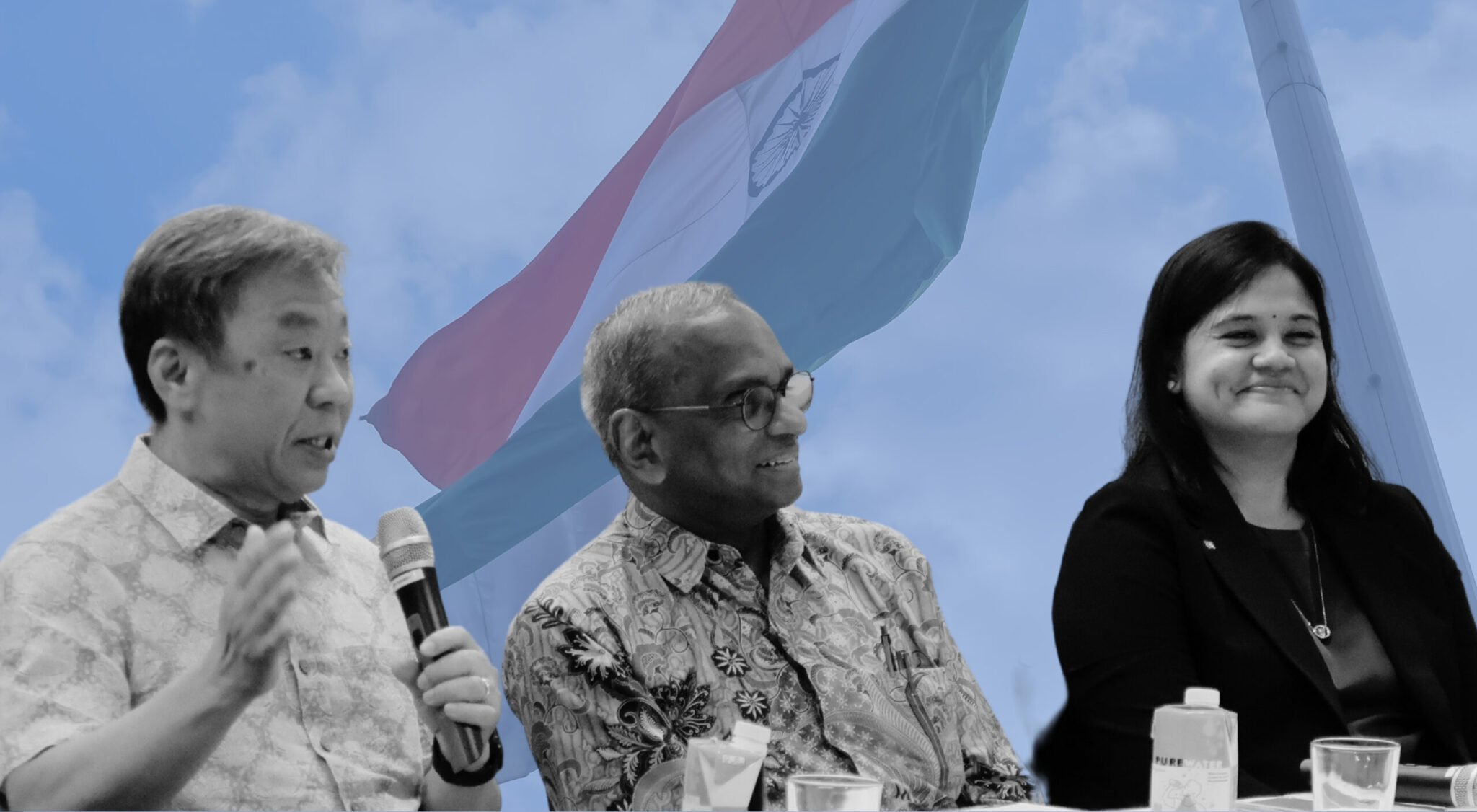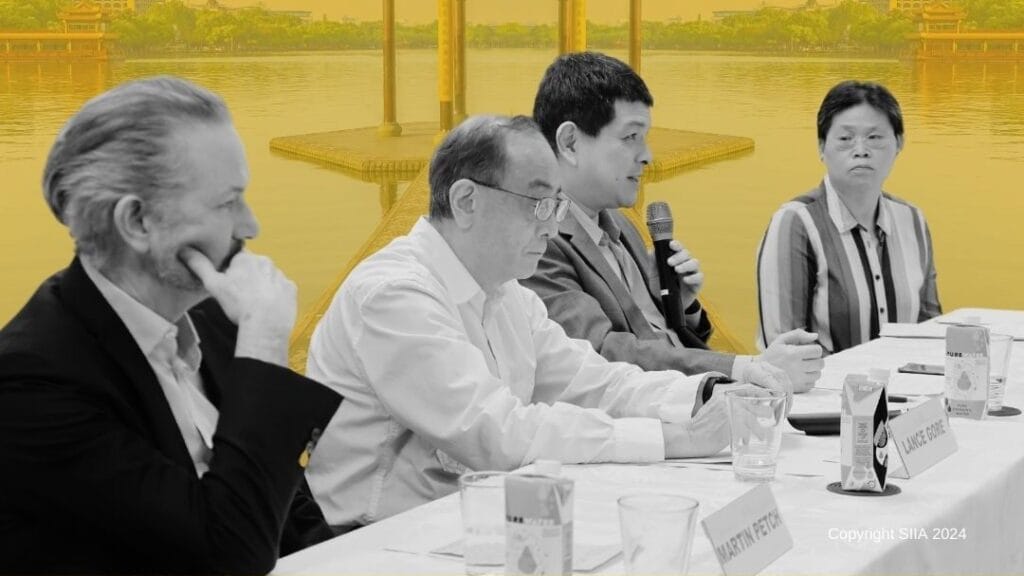The 2024 Indian elections saw nearly a billion voters across the country cast their votes, with Bharatiya Janata Party’s (BJP) incumbent Prime Minister (PM) Narendra Modi facing off against I.N.D.I.A., the opposition alliance, in his bid to win the country’s top political position for a third term. With most pre-election exit polls predicting a resounding victory for the BJP and indicating it might be able to form a supermajority in the Indian parliament with alliance partners under the National Democratic Alliance, BJP’s 240 seats out of a possible 543 presented an unexpected result to observers.
The results of the 2024 Indian Elections and its consequent impacts beyond Indian shores were discussed at a talk organised by the Singapore Institute of International Affairs (SIIA) on 19 June 2024.
The following insights were from the speakers at the talk: Ms. Radhika Rao, Senior Economist & Executive Director, DBS and Professor Tan Tai Yong, President and Professor, SUSS. Mr. Manu Bhaskaran, CEO, Centennial Asia Advisors, and Council Member, SIIA served as the moderator for the session.
Key takeaways
The results may have been a surprise to some given the significant momentum generated by the party in the run-up to the elections, from the unveiling of the Ram Mandir in Ayodhya to the BJP’s strong record in state legislative elections in November 2023, giving them control over three of four large states. In particular, Mr. Modi’s momentum had been sufficiently strong before the elections, to allow the BJP to set a target to win 400 seats in India’s parliament, thus giving the NDA a supermajority. The strong performance of the I.N.D.I.A alliance was also unexpected, with the BJP’s natural rivals in the Indian National Congress having doubled their share of seats from 52 to 99.
Rationalising the results
Despite these results, speakers cautioned against the notion that the BJP had ‘lost’ the elections, noting that voters’ confidence in the party had merely lessened marginally, enough for the BJP to lose constituencies by razor-thin margins, costing them seats in parliament. Even though this would be Mr. Modi’s first term without a clear majority in parliament, forming a coalition government does not mean a total loss of power for the BJP. Notably, Indian governments from the late 1990s to 2014, when Mr. Modi had won his first term with a simple majority, have been in minority governments, ruling with a coalition. Such coalitions had not precluded India from achieving strong economic growth, since some of the country’s most dramatic changes had been enacted under coalition governments.
The BJP had also maintained strongholds in the states of Himachal Pradesh, Gujarat and Chhattisgarh, while results in Odisha and Bihar were also stronger than expected. Such results still gave the NDA a strong showing of 240 seats, despite the disappointment of losing 30 seats in Uttar Pradesh,. While the BJP did not manage to win over one of South India’s biggest states, Tamil Nadu, the party made significant inroads in other Southern states, losing constituencies by narrower margins than before. India’s ‘first-past-the-post’ electoral system meant that even as the BJP lost only 1% of its vote share compared to 2019’s results, the party lost multiple seats in the 2024 elections.
A tale of two Indias
Despite India’s strong growth rate of 8% a year and the strong international interest in the country, the BJP did not see a ‘Modi wave’, as had been witnessed in 2014 as a result of strong anti-incumbency sentiments and in 2019 after border skirmishes erupted between Pakistan and India. This could be attributed to the economic reality most Indians were facing because of high inflation and unemployment rates. In addition, the BJP had hoped to attract Hindu voters through their Hindutva messaging, with the Ram Mandir opening a focal point of this effort. However, the vote became split along caste lines, with Dalits and Other Backward Caste (OBC) groups turning to non-BJP actors instead.
Looking forward: The BJP’s third term in power
Given India’s vastness and complexity, linguistic, caste and religious differences, a coalition government may be necessary to capture India’s nuances. However, it is yet to be seen if Mr. Modi’s coalition government will be a return to the norm, or if an unstable Indian government is on the horizon. It was noted that even if the BJP’s coalition partners were to back out of the coalition, the BJP could withstand such defections, given its strong showing of 240 seats. In the interim, however, Mr. Modi would need to change his leadership approach to one that is more consultative and inclusive of alliance partners’ viewpoints. He will also not be to push through policies such as land and labour reform or implement controversial laws without building consensus for bills outside of the NDA.
His focus is likely to be on encouraging development through curating an enabling environment for businesses to register and apply for licenses while boosting key infrastructure such as roads and transportation. He will also aim to lower corporate taxes to encourage investment while ensuring that inflation is addressed through monetary policy.
However, it is not clear whom Mr. Modi might choose to take over for him if he elects not to continue leading the BJP past his third term. This may lead to fragmentation amongst BJP leaders as it is not immediately clear which of them is primed to become his successor. Such splits are common in Indian politics, having already occurred to the Congress and Maharashtra’s Shiv Sena party.
Consistency and continuity
Mr. Modi’s cabinet picks also illustrate his third term’s likely focus on policy continuity, as he has retained most of his previous government’s BJP ministers in key portfolios such as finance, transportation and infrastructure. It was noted that Mr. Modi’s reappointment of Dr. S. Jaishankar as Foreign Minister points towards general continuity on a foreign policy front, though India may choose to be more collaborative to encourage greater economic cooperation.
However, given voters’ concerns over unemployment and inflation in the elections, his government will likely look to generate new jobs in labour-intensive manufacturing sectors, and to preserve Indians’ purchasing power to ensure that basic necessities remain affordable. Additionally, the BJP government may seek to reduce inequality by directing more assistance to farming communities, who are especially vulnerable to volatile weather patterns. While the election may affect long-term goals like achieving ‘Viksit Bharat’ (making India a developed nation by the country’s 100th anniversary of independence in 2047), as the coalition government may deter the enactment of comprehensive land and labour reforms, Mr. Modi is unlikely to turn away from the goal altogether.
Initial reactions to the results: overreaction or based on fact?
The strong initial market reaction after the election results were announced was due to investors’ worries that the Modi government might turn to welfarist policies to reanimate support amongst Indian voters for the BJP, or that the BJP might even struggle to form a government. However, the full slate of results showed that the BJP had garnered enough support to continue prioritising infrastructure, with railways, road and transport companies set to be beneficiaries of the government’s renewed focus on growth-stimulating industries. It was also noted that the election results had not been wholly unanticipated, given India’s strong trends of anti-incumbency, and variations in voting patterns amongst its diverse states.
South India’s growing economic clout
Both speakers also noted that South Indian states such as Tamil Nadu and Karnataka are home to manufacturing giants, making such states ideal for investment from the West. Such investments have intensified as countries look to de-risk their supply chains.
Developing Singapore-India ties
Despite a cooling in Singapore-India ties, Singapore still values its relations with India and will do its best to play a more active role in renewing discussions between both sides on several fronts, from cryptocurrencies and emerging technologies to pharmaceuticals. The strong economic relationship was underscored between both countries. It was pointed out that Singapore is still the highest contributor of foreign direct investments into India, and that while ties between both countries will need to be reset, there is willingness from small-to-medium enterprises in both countries to form cross-country partnerships. Hence, the Singapore-India relationship carries great potential.




